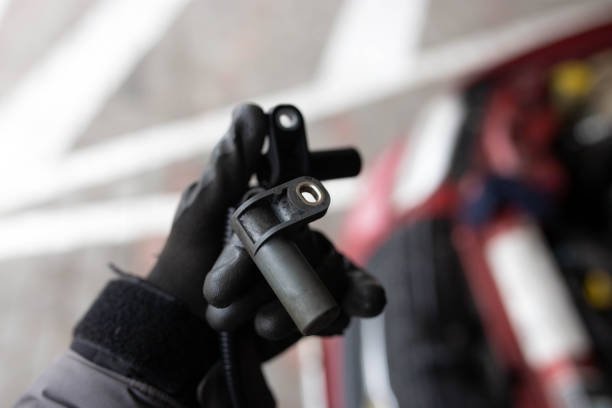In the intricate world of modern automotive engineering, sensors are the unsung heroes that keep your vehicle running smoothly and efficiently. One such crucial sensor is the Crankshaft Position Sensor (CPS). While often hidden away within the engine bay, the CPS plays a pivotal role in ensuring that your engine operates at its best. In this article, we’ll delve into the world of the Crankshaft Position Sensor, exploring its functions, importance, and how it contributes to your vehicle’s performance.
The Basics of the Crankshaft Position Sensor
The Crankshaft Position Sensor is a small but mighty component of your vehicle’s engine management system. Located near the engine’s crankshaft, this sensor is designed to monitor the crankshaft’s rotational speed and position in real-time. The information it provides is then relayed to the Engine Control Unit (ECU), which uses it to make critical decisions about engine performance and operation.
Key Functions of the Crankshaft Position Sensor
Timing Control: One of the most crucial roles of the CPS is helping the ECU determine the precise timing for ignition and fuel injection. By continuously monitoring the crankshaft’s position, the CPS ensures that the spark plugs fire and fuel is injected into the cylinders at precisely the right moment. This precision is essential for optimal combustion, maximizing power output, and reducing emissions. Check this link right here now and buy crankshaft position sensor at cheap price.
Misfire Detection: Engine misfires can be detrimental to performance and fuel efficiency. The CPS detects variations in the crankshaft’s rotational speed, which can be indicative of a misfire. When a misfire occurs, the ECU can adjust the engine’s operation to rectify the issue and prevent potential damage.
Variable Valve Timing (VVT): In some engines, the Crankshaft Position Sensor works in tandem with the Camshaft Position Sensor to control Variable Valve Timing (VVT) systems. VVT systems optimize valve timing for improved power, efficiency, and emissions control by adjusting the opening and closing of the engine’s intake and exhaust valves based on the crankshaft and camshaft positions.
Engine Starting: When you turn the key to start your vehicle, the CPS helps the ECU determine the crankshaft’s initial position. This information allows the ECU to initiate spark and fuel delivery at the right moment, ensuring a smooth and reliable engine start.
Signs of a Failing Crankshaft Position Sensor
A malfunctioning Crankshaft Position Sensor can have adverse effects on your vehicle’s performance. Here are some common signs of a failing CPS:
Engine Stalling: Your engine may stall unexpectedly, especially at low speeds or when idling.
Difficulty Starting: Starting your vehicle becomes challenging, and it may take several attempts to get the engine running. For more online car parts for your vehicle for every make and model available at Suncent Auto at affordable prices.
Poor Acceleration: You may notice reduced power and sluggish acceleration.
Check Engine Light: A malfunctioning CPS often triggers the Check Engine Light, indicating a problem in the engine management system.
Increased Emissions: A failing CPS can lead to increased emissions, potentially causing compliance issues in areas with strict emissions regulations.
Replacing a Crankshaft Position Sensor
If you suspect your CPS is failing, it’s essential to address the issue promptly to avoid further damage to your engine and maintain optimal performance. Replacing a Crankshaft Position Sensor typically involves the following steps:
Locate the Sensor: The CPS is usually located near the engine’s crankshaft, often behind the harmonic balancer or crankshaft pulley.
Disconnect Battery: Disconnect the vehicle’s battery to ensure safety during the replacement process.
Remove Obstacles: Depending on your vehicle’s design, you may need to remove other components or parts to access the CPS.
Replace the Sensor: Carefully remove the old CPS and replace it with a new one of the same specifications. Ensure that the new sensor is properly aligned and secured in place.
Reconnect Components: Reassemble any parts or components that were removed to access the CPS.
Reconnect Battery: Reconnect the vehicle’s battery.
Clear Error Codes: If the Check Engine Light is illuminated, use a scan tool to clear any error codes.
Test Drive: Take your vehicle for a test drive to ensure that the new CPS is functioning correctly.
Conclusion
The Crankshaft Position Sensor may be a small and often overlooked component, but its role in your vehicle’s performance and efficiency is immense. It’s a testament to the intricate engineering that goes into modern automobiles, ensuring that every combustion event occurs precisely when and how it should. So, the next time you turn the key and your engine roars to life without a hiccup, you can thank the Crankshaft Position Sensor for its behind-the-scenes contribution to your driving experience.






